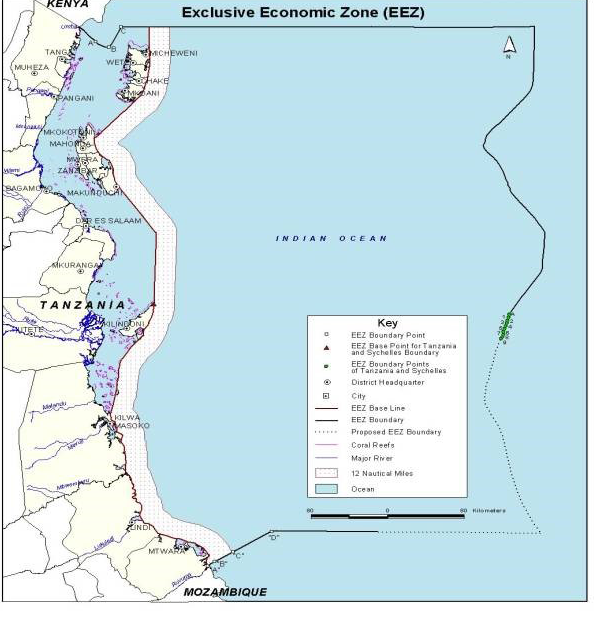Objectives
The SWIOFish Program will continue to support regional integration around fisheries management, while expanding the approach beyond research to strengthen sector governance and promote shared growth through harnessing the value of coastal and marine fisheries to national economies. The proposed program using a Series of Projects Approach (SOP) will be implemented over a 15-year period, using IDA and blended GEF resources, together with parallel support from other donors and trust funds. Given the importance of sound fisheries management to livelihoods and economic growth, the Government of Tanzania will participate in the SWIOFish. The SWIOFish SOP includes activities to be implemented over an initial six-year period, to contribute toward an overall 15-year, 3-phased program.
The Program Development Objective of the South West Indian Ocean Fisheries Governance and Shared Growth Program (SWIOFish) would be to increase the economic, social, and environmental benefits of SWIO countries from effective management of priority fisheries at regional, national and community level. A phased set of complementary country and regional investments would achieve the program development objective by: (i) strengthening the countries’ governance capacity to manage fisheries at the national and regional level, including reducing illicit fishing activities and strengthening co-management of small-scale fisheries; (ii) investing to increase the profitability and sustainability of fisheries and value chains, and boost the value-added captured by the SWIO countries; (iii) supporting policies that improve the sharing of benefits derived from sustainable use of marine living resources in particular through pro-poor and community fisheries; and (iv) building robust and cost-effective regional cooperation on fisheries.
The Project Development Objective of the first, six-year phase of the Program (the Project) would be to improve the management effectiveness of selected priority fisheries at regional, national and community level. The first phase of the SOP would extend, consolidate and build on the accomplishments of SWIOFP, MACEMP and other Bank and GEF-funded activities in the region. It would consolidate and strengthen regional cooperation on fisheries and marine resource management, through improved management of transboundary fisheries, strengthen regional fisheries institutions, and promote knowledge exchange and capacity development. It would also establish the core human and institutional competencies and frameworks for sustainable fisheries management and prepare for any major public and public/ private capital investments required, for example, for fleet adjustment, out grower mariculture, port infrastructure, or replication and expansion of community fisheries co-management or business programs. The first phase will begin in an initial group of countries including Mozambique, Comoros, and Tanzania.
Components
Component 1. Enhanced regional collaboration. All SWIOFC countries will participate in this first component, which will support the provision of a regional public good through regional coordination and cooperation on the management and sustainable development of fisheries in the SWIO. In line with the subsidiary principle described earlier, and although all Project activities will yield important regional benefits, Project activities that can be implemented at the national level will be supported under components 2 and 3. Sub-component 1.1. (Enhancing capacity for managing priority regional fisheries and challenges) will support engagement with all SWIO countries to start developing a regional strategy to increase national and regional benefits from priority regional fisheries, support collaboration on transboundary living marine resources, and address shared challenges. It will also support implementation of a core regional work plan toward implementing this strategy. Sub-component 1.2. (Sustainable regional coordination and collaboration) will provide for the further development and consolidation of institutional arrangements for regional fisheries collaboration, the SWIOFC in particular. The sub-component will also support regional knowledge management and exchange.
Component 2. Improved governance of priority fisheries. The component primarily targets policies, strategies, institutions and legal frameworks, and actions by the public sector necessary to improve priority fisheries performance and marine environmental health of the region. It will be backed by activities aimed at understanding the resource base, and human and institutional capacity building necessary to implement fisheries policies and management plans. Three closely-linked and mutually supportive activities, directed to both the public sector and coastal communities, are envisaged: (2.1) Knowledge and management of priority fisheries; (2.2) Improving the performance of public institutions and assets; and (2.3) Information, communication and awareness.
Component 3. Increased economic benefits to the region from priority fisheries. The component primarily targets enabling the region’s private sector productivity and investment, and public investments critical to a viable private sector. The component will improve the regional business climate, assist a responsible private sector and prepare feasibility studies and designs for priority infrastructure investments for potential future investments. The Project will support the following sub-components: (3.1) Improved business and investment climate; (3.2) Expansion of opportunities for priority fisheries and value addition; and (3.3) Planning and investment in strategic infrastructure.
Component 4. Project Management and Coordination will support regional Project coordination and implementation, country-level implementation and management, and monitoring and evaluation at regional and country level. It will operate through Regional and National Steering Committees (RSC/NSCs) and Regional and National Management Units (RMU/PMUs) at regional and country level respectively, through the following sub-components: (4.1) Project management at regional level; and (4.2) Project management at country level.

